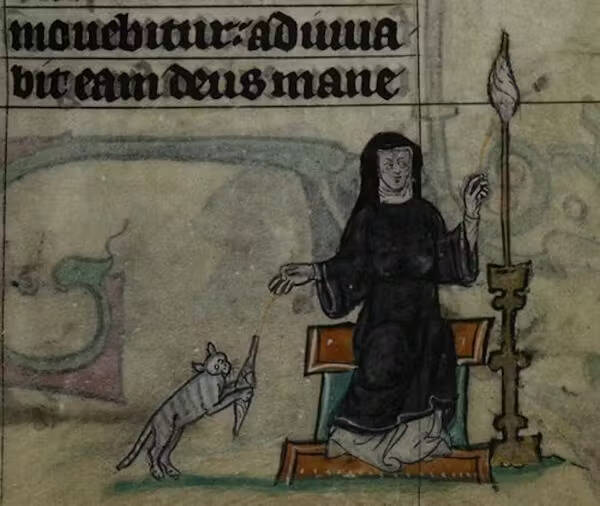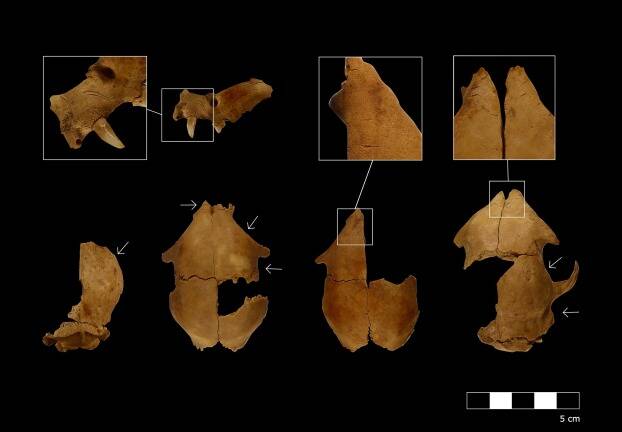During the Middle Ages, Europeans skinned domestic cats for their fur. Now, recent excavations have revealed the first archaeological evidence of the practice in medieval Portugal.

Public DomainA cat playing with a spindle in a 14th-century illustration from the book Maastricht Hours.
During recent excavation work along Rua do Registo Civil in Portugal, archaeologists unearthed two medieval-era storage pits containing over 200 domestic cat bone pieces.
Shallow incisions found on the bones indicate that the cats were likely skinned for their pelts, a practice that was common in other parts of Europe during the Middle Ages.
This finding represents the first of its kind in Portugal — and poses interesting questions about attitudes toward cats in the Middle Ages.
A Disturbing Discovery About Cat Use In Medieval Portugal

Eva Pires / Journal of Archaeological Science
Images of the cat bones discovered in Portugal.
Along Rua do Registo Civil in the town of Almada, Portugal, researchers recently discovered two storage pits containing medieval household waste and a total of 202 bone remains belonging to 13 cats from the 12th and 13th centuries.
An analysis of the bones indicated that the cats were likely skinned for their pelts. According to the researchers’ study, the location and angle of cut marks found on the bones were consistent with skinning.
“The position and characteristics of light cuts, mostly located near the snout and at the top of the skull above the eye, point to the removal of the skin for the purpose of using the animal’s pelt,” the researchers wrote.
The age of the cats may further support the theory that they were used for their pelts. Six of the cats were under four months old at the time of their death. One was between five to six months old, and the other six were over a year old. At this age, the cats would have been fairly large, but their fur would still have been in good condition, likely making them ideal for pelt harvesting.
By examining the cats’ teeth, researchers confirmed that 12 of the 13 cats were domestic. The 13th cat could have either been a wild cat or a large domestic cat.
The researchers also noted that the presence of cat remains among household waste reveals interesting insights about how medieval Europeans might have viewed the animals. It’s possible that, compared to dogs, whose remains were not found among domestic waste, cats may have been viewed as less favorable.
Why Did Medieval Europeans Skin Cats?
While the practice of skinning cats for their fur had previously been documented in medieval writings, this is the first archaeological evidence of the practice in Portugal. However, the practice was not uncommon in medieval Europe.
In 2017, researchers discovered over 900 cat bones in pits in El Bordellet, Spain. These bones also showed incisions that were consistent with skinning.
As for why medieval Europeans skinned their cats, researchers note that their fur was used for making clothing — and may have even been used in rituals.
“The skins were basically used for making garments, mainly coats,” Lluís Lloveras, a zooarchaeologist at the University of Barcelona, told Live Science in 2017. “Some texts also make reference to the healing qualities of cat skin, but also to its possible harmfulness.”
The most recent finding in Portugal is just a small piece of the mystery surrounding the cat fur trade in medieval Europe. Researchers note that they have not found clear evidence of a large-scale, organized fur trade in Portugal, so it is yet unclear whether this practice was commonplace in the region.
After reading about cats in the medieval ages, explore seven places around the world that have become overrun with cats. Then, read about nine medieval-era customs that were beyond strange.





